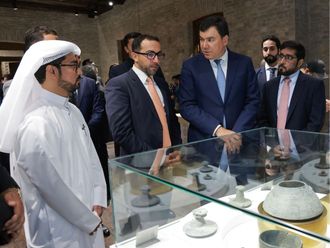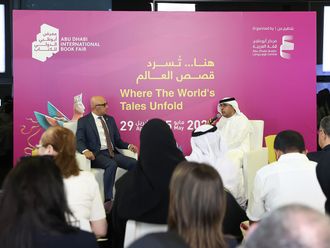The proposed township of Magarpatta City in Pune seems to have finally taken off as hectic construction is under way in the Phase I development also demonstrates the unique concept under which the Rs25-billion project has evolved.
Despite a slow start some years back when the real estate markets dithered, the Housing Development and Finance Corporation (HDFC) trusted the instincts of the 120 agriculturists who had pooled their land for developing an innovative township.
With a seed capital of Rs20 million, the initial funding helped in starting the infrastructure of a 400-acre piece of land where a neighbourhood residential complex along with a Cybercity and all the paraphernalia of an urban lifestyle, including schools and a hospital, is now taking shape.
Yet, there is a difference in this project. Perhaps, what is heartening to learn is that it is not a group of builders or developers who have taken over the land for the project.
Explaining how the concept of farmers coming together arose, Satish Magar, managing director, Magarpatta Township Development and Construction Company Ltd, says, "In the Nineties, we saw the fragmentation of agricultural land, uncontrolled expansion of urbanisation and the resultant growth in slums and social problems."
"All of a sudden farmers earned money in abundance and frittered it away quickly. In no time they had become paupers or were forced into a situation of doing small jobs to the very people they had sold," Magar told journalists who were taken on a round of the Magarpatta City last week.
"We thought of working out a plan that would give our future generations a better life and decided to make a city within a city."
Landholders who owned these lands for over 300 years in this area known as Magarpatta, close to Pune city centre, now became shareholders in proportion to the land they owned.
By 1994-95, the project was presented to the Pune Municipal Corporation and the Maharashtra government, and in 1999 Magarpatta City took off in earnest as architects, engineers, environmentalists, technocrats and others became a part of a great big team for this unique project.
It would take at least two years for Phase I to be completed and the entire project of four phases would be ready by 2007-2008.
For the 50,000 people who would be accommodated in about 12,000 apartments of two- and three-bedroom flats, duplex penthouses, row houses and villas, the promoters assure of regular water supply from the PMC and electricity.
The first phase has 1,100 flats under construction, of which 125 are ready for possession, with 70 families already having moved in.
The cost of a three-bedroom-hall-kitchen flat with a built-up area of 1,387 sq ft and a terrace area of 150 sq ft, including stamp duty, registration charges and a one-time maintenance of Rs75,000 works out to Rs1.8 million.
A primary school under the ICSE system up to Standard I is already functional and every year three classes will be added.
Also under construction is a 250,000-sq ft office building, one of the 24 structures in the circular row of offices in the Cybercity where call centres have already booked space.
"Pune is the Oxford of the East and we expect a knowledge-based industry taking roots here," says Magar hopefully.
One of India's largest shopping centres with an area of 525,000 sq. ft. is coming up in Magarpatta where 800 shops, swank restaurants, parking space for 800 cars and 1,000 two-wheelers and business centres could make it an emerging address of the future.
The project is considered unique as "it is conceived as an idealistic township based on walk to school, walk to work, walk to entertainment, walk to shopping and walk to recreation concept" to not just save on time and transport but be close to nature.
More than 120 acres are set aside for gardens and a trip around the township can see that the promoters are sticklers for aesthetic landscaping that is based on "rutuchakra" or the six seasons of nature.
Magarpatta - a unique concept in town planning
The proposed township of Magarpatta City in Pune seems to have finally taken off as hectic construction is under way in the Phase I development also demonstrates the unique concept under which the Rs25-billion project has evolved.












